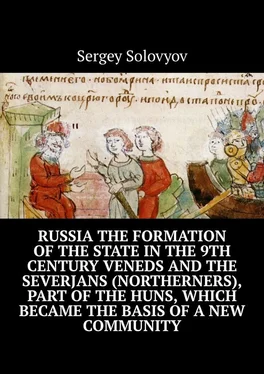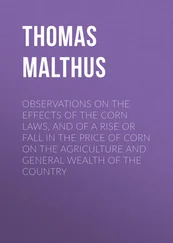Russia the formation of the state in the 9th century Veneds and the severjans (northerners), part of the Huns, which became the basis of a new community
Sergey Solovyov
© Sergey Solovyov, 2020
ISBN 978-5-0051-5935-9
Created with Ridero smart publishing system
This study aims to pose new questions and provide unambiguous answers in the history of the creation of the Old Russian state in the 9th century AD. This topic has always been important, because it touches the very foundation of our country, Russia, because Russia was and is the forerunner of the Russian Federation, a huge state stretching from the sources of the Dnieper, the shores of the Baltic and the Sea of Azov, Crimea and to the shores of the Pacific Ocean. Many peoples found themselves in the orbit and borders of our state, and the rights, freedoms and language of these peoples are protected by the Constitution of Russia. So a will of chance or a historical pattern was the reason for the creation of such a large and multinational country? The author will try to substantively prove that it was a natural historical process that was the reason, and not an accident or the good or evil will of several rulers. Did associations of peoples exist before the 9th century on this territory? Yes, undoubtedly, and, moreover, from time immemorial. There were attempts to find the homeland of the Slavs in the Pripyat swamps, in fact, it is not clear where and it is not clear from where. Trying to juggle more with the fact that the very name “Slovenes” or “Slavs” appears only in the 6th century AD. from Procopius of Cessaria. Yes, this is exactly the case, but there is another amendment, or clarification. In Germany, where undoubted Slavs live, the original population of these lands, the Lusatian Serbs. So, in Germany, officially the Slavs are called only SERBEN and WENDEN (Ladusch, Manfred, etc. Die Sorben in Deutschland) and no, absolutely no Slavs. So, based on the logic of these scientists, there were no Slavs on the territory of East Germany. However, this is not so and not at all so. It is on this territory since the 12th century BC. the Vendian tribes live compactly. By the way, our neighbors the Finns and the Estonians still call Russia Venaja, that is, showing the continuity from the Wends to the Russians. It was the migration of the Vendian tribes to the South and East that was described by Procopius in the 6th century, apparently the very beginning of a long process. But, it is clear that in the East, the Vendians met not an empty land, but a land inhabited by tribes directly descended from the Scythians, Sarmatians and Huns, which is one and the same, that is, the tribal union of the Northerners. But, it should be noted that Ptolemy as early as the 2nd century AD. described Sarmatia as a territory from the Oder to the Urals and further, dividing Sarmatia into European and Asian, a country with many cities. Not only Ptolemy speaks about the already formed states on the territory of present-day Russia, Poland and Germany. This is stated in the ancient High German epic “Dietrich of Berne”. Also in this context are interesting and “Vilkina-Saga” and “Ortnit”.
The very place of formation of the Slavic ethnos amazes the imagination – from the Ob River, according to “Guestrovskaya Ode” and “The Legend of Slaven and Ruse” to the Oder in the west, the Baltic Sea and the Danube. Deep rivers flow through this vast territory, which in themselves served as an obstacle to the migration of people – the Volga, Don, Dnieper, Prut, Vistula, Dvina, Danube, Elbe and Oder. As you can see, the wave of migration of the ancestors of the Slavs in ancient times was so powerful and irresistible that the tribes of the ancestors of the Slavs were able to cross these obstacles and settle over a vast territory.
This area belongs to the temperate zone, with a pronounced change in climate in winter and summer. The abundance of industrial wood made it the most common material for the craft – houses, dishes, fortified areas were built from wood, and due to the abundance of material, it was not too expensive. The downside was the frequent fires that destroyed buildings. Also, monuments and buildings made of wood are poorly preserved in the ground, often leaving only ramparts and ditches that have drifted from time to time. However, recently, researchers have learned to apply the analysis of images from space or resort to the help of aviation.
The abundance of water sources has always helped agriculture, and farming and cattle breeding. Harvests, at that distant time, of course, were not as plentiful as in Mesopotamia and Egypt. It rains regularly, and although there are droughts, they are not decisive, as there are no desert areas. However, excluding the Urals, these lands are relatively poor in copper deposits, which was important in ancient times, but the Baltic states had amber, which for many thousands of years became the basis of exchange. The culture of clay processing – ceramic production – was developed, and it was also very peculiar. In general, ceramics is one of the most important indicators of different cultures, making it possible to judge their similarities and differences. In the Volga-Don basin, such a source of exchange could only be grain and valuable fur raw materials obtained from the North and Siberia, as well as honey and wax. The ancestors of the Slavs also domesticated cattle, using cows, sheep, goats in the economy.
It may seem strange, but before domesticating horses on the farm, especially in the Northern regions, moose were used as a draft force. From agricultural products, cereals are known, cabbage, beets and carrots early came into the life of the ancestors of the Slavs, like apples. Judging by the references in the songs, grapes were also grown. Fishing was also an important craft, often replacing and supplementing bread in case of crop failures, and consequently, shipbuilding developed, which was so original that it is difficult to believe now – the boats were not knocked down by nails, but were sewn together by attaching boards to the ship’s frame. Even earlier vessels were leather, with a skin made of animal skin.
The first, although not the most important, source of information about such a distant past is myths and fairy tales. Though not simple, but fruitful work, myths and legends reveal their secrets to researchers, like the well-known example of the great Heinrich Schliemann and Arthur Evans, who revealed the mysterious depths of the then unknown Cretan-Mycenaean culture, based on the poems of Homer and ancient Greek myths.
Bear-father
These are the tales “Three Bears” and “Masha and the Bear”. Both tales are based on the myth of the ancestor bear. In the first, “Three Bears”, the girl gets into the house of bears in the forest, trying their food, and trying to sleep, and then runs away.
In the fairy tale “Masha and the Bear”, the girl Masha gets into the bear’s house, and remains to live with him. Then, the girl Masha is tricked back into her house, asking the Bear to bring gifts to grandfather and grandmother. And she climbs into the box. It is obvious that many fairy tales, such as “Beauty and the Beast”, “The Scarlet Flower” are based on this particular tale. Where, Monster Bear, then brings the girl home. Here, again, there is a tale about the First Ancestor-Bear, who returns (GIVES from the dead) a girl, and returns her to the world of people.
The bear, generally a revered animal among the Slavs, is an object of cult and respect.
Swan geese
The cult animal, along with the bear, was the swan goose, which are inseparably mentioned in the tales of the Russian people. However, similar, even more likely, identical legends are observed in Pomerania and Denmark and Sweden, where the Huns-Hans reached in the Bronze Age. The very name of this tribe is associated with the goose, because in German it is Hans-goose. And naturally, tales and legends with a goose are numerous – Geese-Swans appear in many tales. But earlier, the goose was the subject of a cult – this animal, as in the myths of Apollo, who also came from the North, carried the soul of the deceased to the Land of the Dead. This is evidenced by the numerous figurines of these birds in the burials of the Scythians, Sarmatians and Huns. But in the Bronze Age, geese were depicted schematically, in the form of a meander.
Читать дальше












